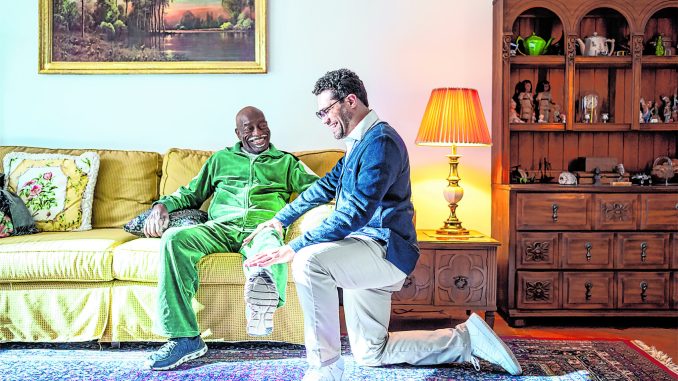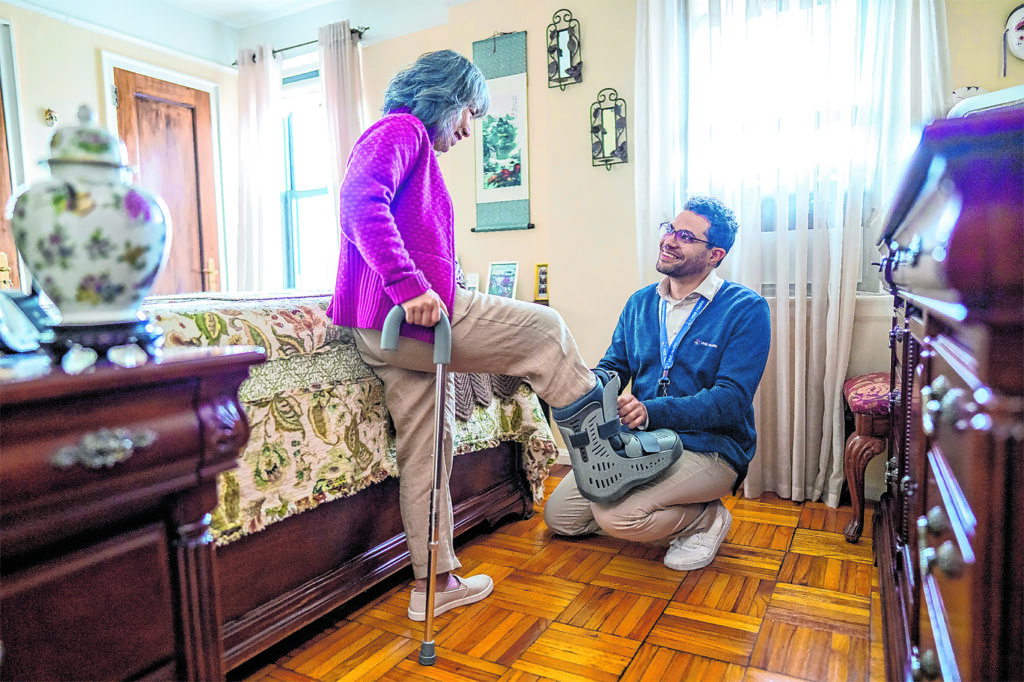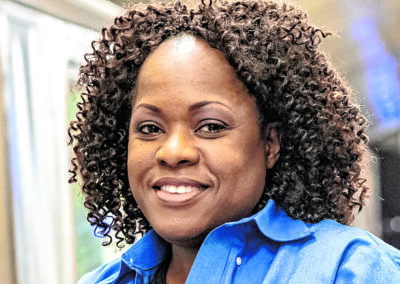
By Allison Simms
Falls may not be at the top of our minds as we consider health goals for the new year, but the probability it may happen to someone you know is high—especially if that person is an older adult. As the CDC has found, roughly 25 percent of individuals 65 or older experience a fall each year.
While falls are common, so is the tendency to underreport them to a clinician. Less than half of all people who have had a fall ever let their doctor know. There’s often a sense of shame around taking a tumble, but losing your balance or having a fall is nothing to be embarrassed about. All of us need help sometimes. As common as they are, falls should be taken seriously.
As I tell our patients and their families, “Leaves are supposed to fall. People aren’t.”
Taking preventative measures and getting help quickly if a fall does occur can make a world of difference. In my role as associate director of rehabilitation services at VNS Health, my colleagues and I see this firsthand when we visit patients in their homes following a fall. As home-based clinicians, we work closely with them to address their concerns and create a plan of care where they can recover and prevent future falls.

With that in mind, here are some simple tips for preventing and—if need be—recovering from a fall:
• Home, safe home: Most falls occur in a patient’s home. So, the very first thing we do when visiting a new patient is assess the safety of their home environment. This means ensuring that the home is clear of obstruction and screened for fall risks, like loose cords or throw rugs that might slip underfoot.
• The proper fit: If someone has lost weight during the pandemic but is still wearing the same-size clothes as before, they could be at greater risk of tripping over those clothes and falling. A pair of shoes that are too big or too tight can pose a similar risk—so make sure you are wearing comfortable clothing in the right size, with a fit that helps you feel and stay secure.
• Sleep tight: Adjust your sleep positions to minimize fall risk at night. Patients who sleep on the edge of the bed are more likely to fall out of bed than those who sleep in the middle.
• Keep moving: Keep yourself as active as possible—it can help reduce falls. Staying physically active doesn’t have to mean going to the gym. It could be as simple as walking to the mailbox every day or boosting circulation and flexibility by stretching your feet and ankles while you’re watching your favorite TV show.
• Monitor medications: Closely monitor yourself when taking medications that may cause dizziness or lower blood pressure, for they can increase the chances of a fall happening.
• When coming back after a fall, don’t give up! Recovering from the physical and emotional trauma of a fall can be challenging, but it’s important to remember that physical therapists, occupational therapists, speech-language pathologists, and many other clinicians are here to help you regain function and find a way to move towards a healthy future. Staying motivated is half the challenge. Fortunately, your care team and loved ones will be by your side cheering you on—ready to help when you have setbacks, and to congratulate you when you finally reach your destination.

Visit www.vnshealth.org/home-care/rehabilitation-therapy for more information about VNS Health’s Rehabilitation Services, which include physical therapy, speech pathology and occupational therapy. VNS Health is formerly known as Visiting Nurse Service of New York (VNSNY).

Be the first to comment